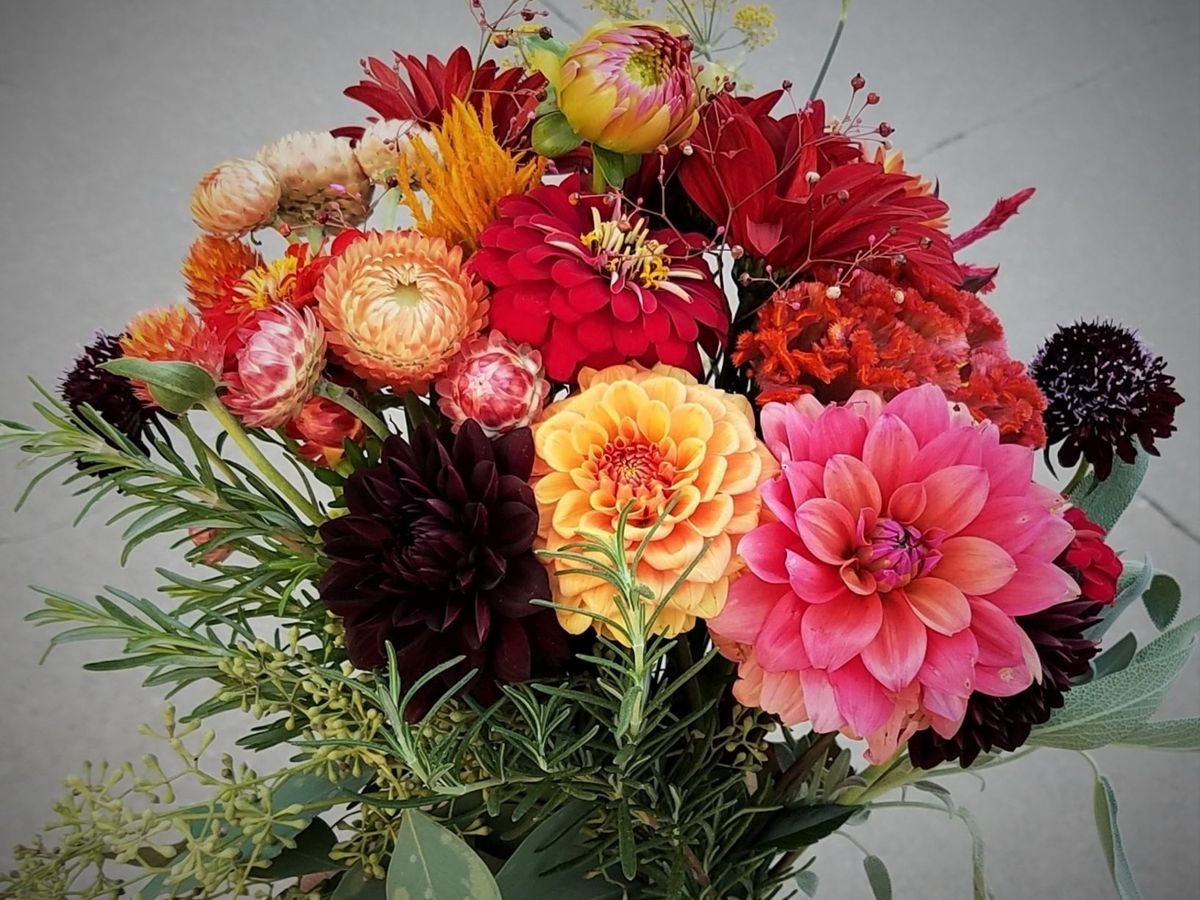An Ode to Flower Giving
A bouquet of flowers is, if thought about for even a little, a very peculiar gift. I don’t think I have ever found a gift so universal. Birthday? Check. Housewarming? Check. Date night? Extra-check. Combination birthday-housewarming-date? You know it!
And yet a gift that requires such minimal thought and knowledge of the individual seems to be a gift everyone genuinely enjoys (people with allergies—I sincerely apologise). So what’s so special about a few plants tied together?
One idea is that impermanence is a necessary part of beauty and flowers are therefore more universally expressive than say, a cool rock you found on the beach one day—it’s exactly because they are so fleeting. A romantic idea, yes, but one I’m inclined to judge for its attitude to impermanence—a fish is also fleeting if you are irresponsible enough, but that doesn’t make it a very universal gift (speaking generally of course. Personally, I would love a fish).
A quick dive into minimalist school of thought and the accompanying research about the influence of experiences as compared to material gifts in relation to happiness leads to a fun idea that flowers are the best of both worlds—you have a thing (for a bit), and also the experience receiving the thing (and posting on your Instagram story about it). Like a DIY kit for people who think they are too cool for DIY kits, it provides an opportunity to do something—watch some flowers bloom, grow and die, as well as have something, which is pretty cool.
image via
Looking to history, there is also a lot to unpack. Greek mythology seems to have a story for every flower, the vast majority of which centre themes of love. The myth of Clytie and Apollo is an example of this. Clytie the water nymph is in completely love with the Sun god Helios despite his rejection of her, and spends days watching him cross the sky while herself wasting away, to eventually become a sunflower, still watching him for eternity. Maybe it’s something about not being able to stop looking at your crush being relatable, but it is one of my favourite myths. Maybe I just like sunflowers.
Narcissus, more famously, faced a similar predicament where he too couldn’t look away from his Love and turned into a Narcissus (aka the daffodil) . Iconically, the one he couldn’t turn away from was his own reflection. With context of the myth the gods were condemning him for being full of himself, but with 21st century perspective, lazing around a river full of self confidence for a few weeks only to be ‘doomed’ to become a self love icon and continue to do this for all eternity seems like a pretty great punishment to me.
image via
Unsurprisingly, the Greeks weren’t the only ones to think flowers were myth worthy. In Egyptian mythology, a lotus flower was the beginning of the world at least for people; prior to that the world was an infinite expanse of darkness and water named Nun. Atum (or Ra, depending on translations) emerged from Nun in a lotus flower as a baby through his own willpower by uttering his own name. He then created gods and humans, and here we are. Blue and white lotus went on to carry great meaning in Egypt, with pharaohs tying blue lotuses to their chariots for luck in wars, as well as a symbol of growth and healing.
image via
In Russia, my home country, flower giving is extremely common. Teachers receive flowers on the first day of school, parents on their children’s’ birthdays and lovers on dates. Flowers, often with little to no occasion or explanation are always around. Here in Chicago, I send flowers remotely to my loved ones. We are connected by this ancient ritual that spans time, place and culture; the desire to give something beautiful to someone we love for no apparent reason. Flowers are one of the oldest gestures of love and, I would argue the most universally effective gestures.
What I’m saying is we need to gift more flowers!
Featured image via









